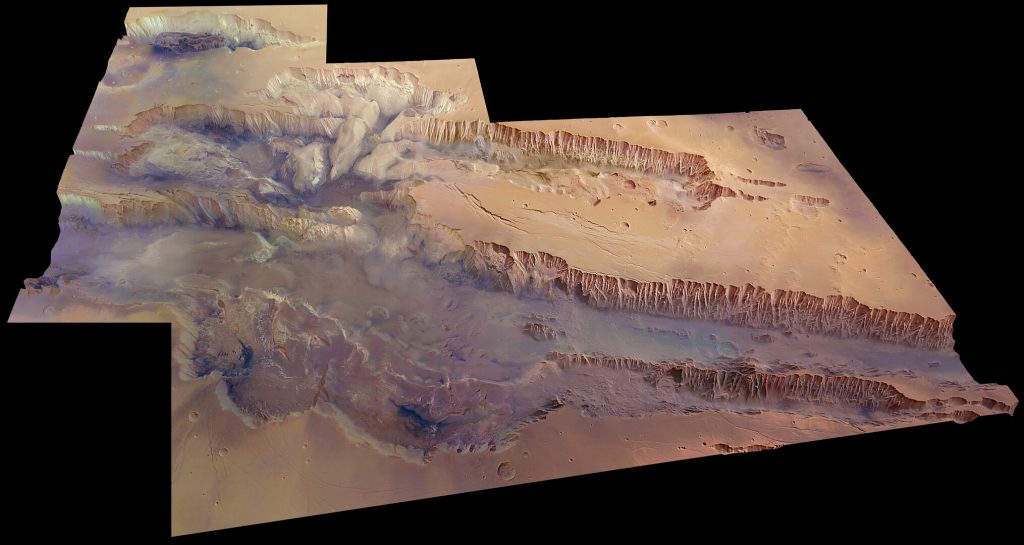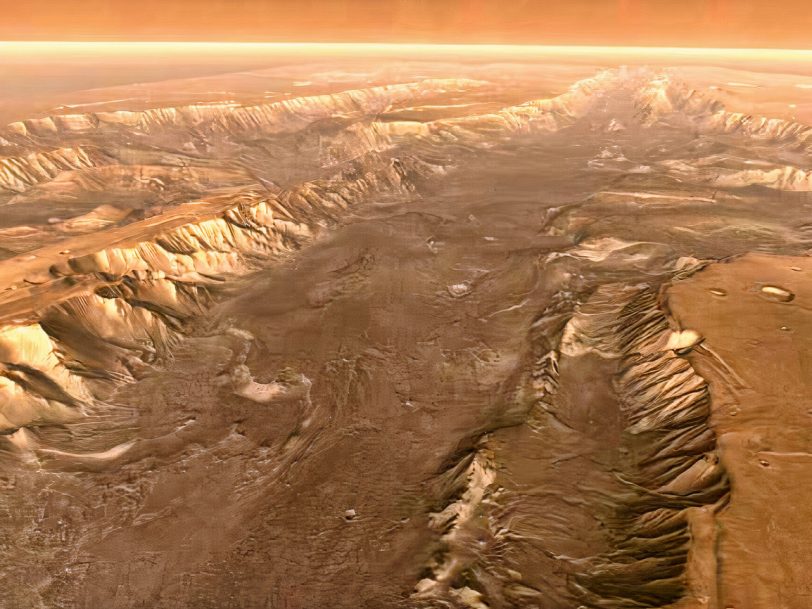Valles Marineris, the largest canyon in the Solar System, deeply marks the surface of Mars; a tectonic crack widened by erosion and marked by nearby channels potentially carved by water. It turns out that some of that water might still be there. Orbital observations indicate that a hidden reservoir of water exists beneath the soil at the bottom of this vast canyon.
The ESA-Roscosmos ExoMars Trace Gas Orbiter (TGO) has been measuring the amount of hydrogen on Mars’ surface. Hydrogen is a possible substitute for water. Using the FREND instrument on board TGO, the team discovered a region where, if the hydrogen detected is in the form of water ice, it could account for up to 40% of the near-surface material.
According to Icarus, the potentially water-rich region is discovered overlapping the Candor Chaos, an area that was already thought to be a promising place to look for water. Previously, scientists searching for near-surface water on Mars had only explored the very surface, looking for ice-covered dust grains in the soil. The new research digs deeper, so to speak.

“With TGO we can look down to one metre below this dusty layer and see what’s really going on below Mars’ surface – and, crucially, locate water-rich ‘oases’ that couldn’t be detected with previous instruments,” lead author Igor Mitrofanov of the Space Research Institute of the Russian Academy of Sciences, said in a statement.
“FREND revealed an area with an unusually large amount of hydrogen in the colossal Valles Marineris canyon system: assuming the hydrogen we see is bound into water molecules, as much as 40% of the near-surface material in this region appears to be water.”
Although Mars is a frigid desert, the equatorial regions are not cold enough to support exposed water ice, as is found at the poles. Because the Valles Marineris stretches for over 4,000 kilometers (2,500 miles) just south of the equator, the presence of water in the soil is very exciting. More observations will be required to confirm this finding and determine what type of water the researchers believe has been discovered on Mars. Water at those latitudes could be in the form of buried ice or trapped in minerals.
“We found a central part of Valles Marineris to be packed full of water – far more water than we expected. This is very much like Earth’s permafrost regions, where water ice permanently persists under dry soil because of the constant low temperatures,” co-author Alexey Malakhov said. “Overall, we think this water more likely exists in the form of ice.”
“Knowing more about how and where water exists on present-day Mars is essential to understand what happened to Mars’ once-abundant water, and helps our search for habitable environments, possible signs of past life, and organic materials from Mars’ earliest days,” added ExoMars Trace Gas Orbiter project scientist Colin Wilson.
READ MORE: 25 Pics Of Mars Surface Like You’ve Never Seen It Before




